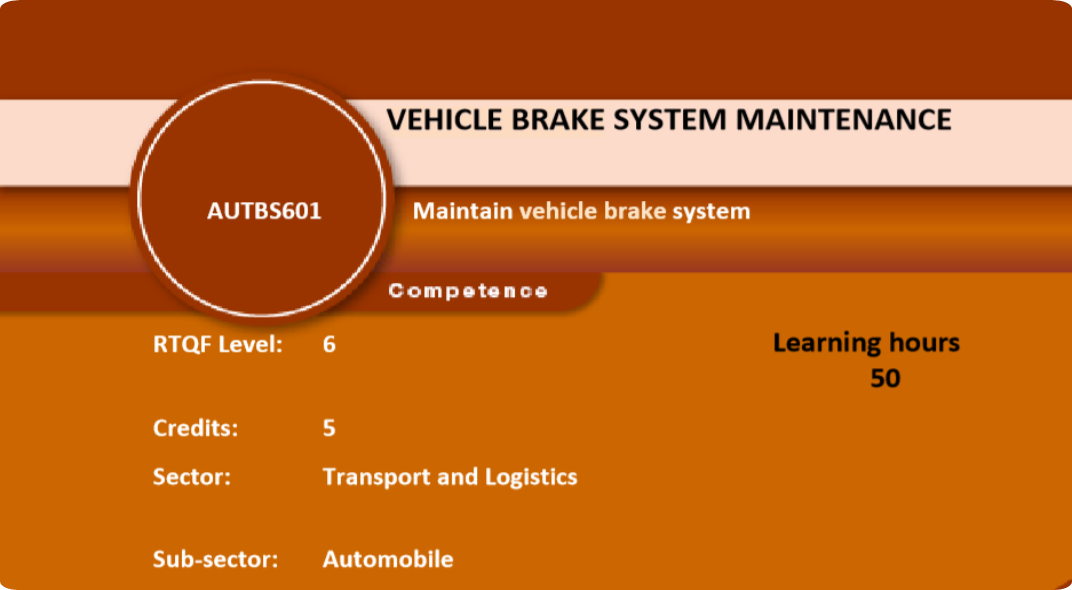
This module describes the knowledge, skills and attitude required to maintain vehicle brake systems. This module is intended to students pursuing diploma in automobile technology. At the end of this module, the students will be able to identify, describe, diagnose, dismantle, disassemble, inspect, replace, reassemble, remount vehicle brake systems components and test vehicle brake systems.
This module describes the knowledge, skills and attitude required to perform powertrain
electronic system maintenance. This module is intended to students pursuing diploma in
Automobile Technology. At the end of this module, the students will be able to identify, describe
and diagnose Vehicle power-train electronic system, electronic engine management, gearbox and
clutch electronic control and final drive electronic control system components, check, clean,
repair and replace sensors; switches, terminals and harnesses, electronic Control unit and
actuators.
- This module describes the skills, knowledge and attitude required to theoretical applications of heat transfer.
- This includes determination of type’s heat lost around a hot body, computation and selection of the proper manner of thermal insulation. This module is intended to trainees pursuing diploma in automobile technology.
- At the end of this module, the trainees will be able
- to describe basics of heat transfer,
- describe heat transfer modes, and
- describe principles of heat exchanger.
- to exercise some initiative and indep endence in carrying out defined activities at a professional level.
LEARNING OBJECTIVES
By the end of the module, the trainee will be able to:1. Identify steering systems2. Maintain steering system3. Identify suspension system4. Maintain suspension system5. Maintain wheel and tireThis particular module describes the performance outcomes, skills and knowledge required to repair wheel and tire. It is very core to every mechanic to perform tire changing, tire repair and wheel balancing in order to keep the good state of wheel and tire of car.
The heat transfer is a form of energy transfer that takes place from a region of higher temperature to a region of lower temperature it offers the students different methods of heat transfer solely due to the temperature difference between the two regions. And, there will be a mass transfer on a microscopic level as the result of diffusion from regions of high concentration to regions of low concentration.
Having successfully completed the module, students should be able to:
Ø Classify steering systems into various categories.
Ø Demonstrate knowledge and understanding of the Construction of various systems parts.
Ø Identify engine wheel suspension.
Ø State the functions of all suspension parts
Ø Identify components of wheel and tires
Ø State components of brakes.
Ø State operating principle of braking system
Having successfully completed this module, the students should be able to:
- Explain the layout of the chassis in relation to frame and fixing, suspension and steering and rectify faults attributable to chassis layout.
- Explain the basic principles of steering construction and carry out necessary repairs and adjustments to its units.
- Explain the principles of operation of a power steering mechanism diagnose faults and rectify them.
- Explain the working principle of automotive suspension and carry out necessary repair and adjustment.
- Explain the basic principles of wheel alignment (Toe in and Toe out, Camber, caster)
- Explain the basic principles of wheel balancing
- Explain the working principles of brake system and carry out repairs on it.
- Explain the functions of the component parts diagnose and rectify faults in hydraulic, air, vacuum and mechanical brakes.
- Beat panel, mix paint and paint panel.